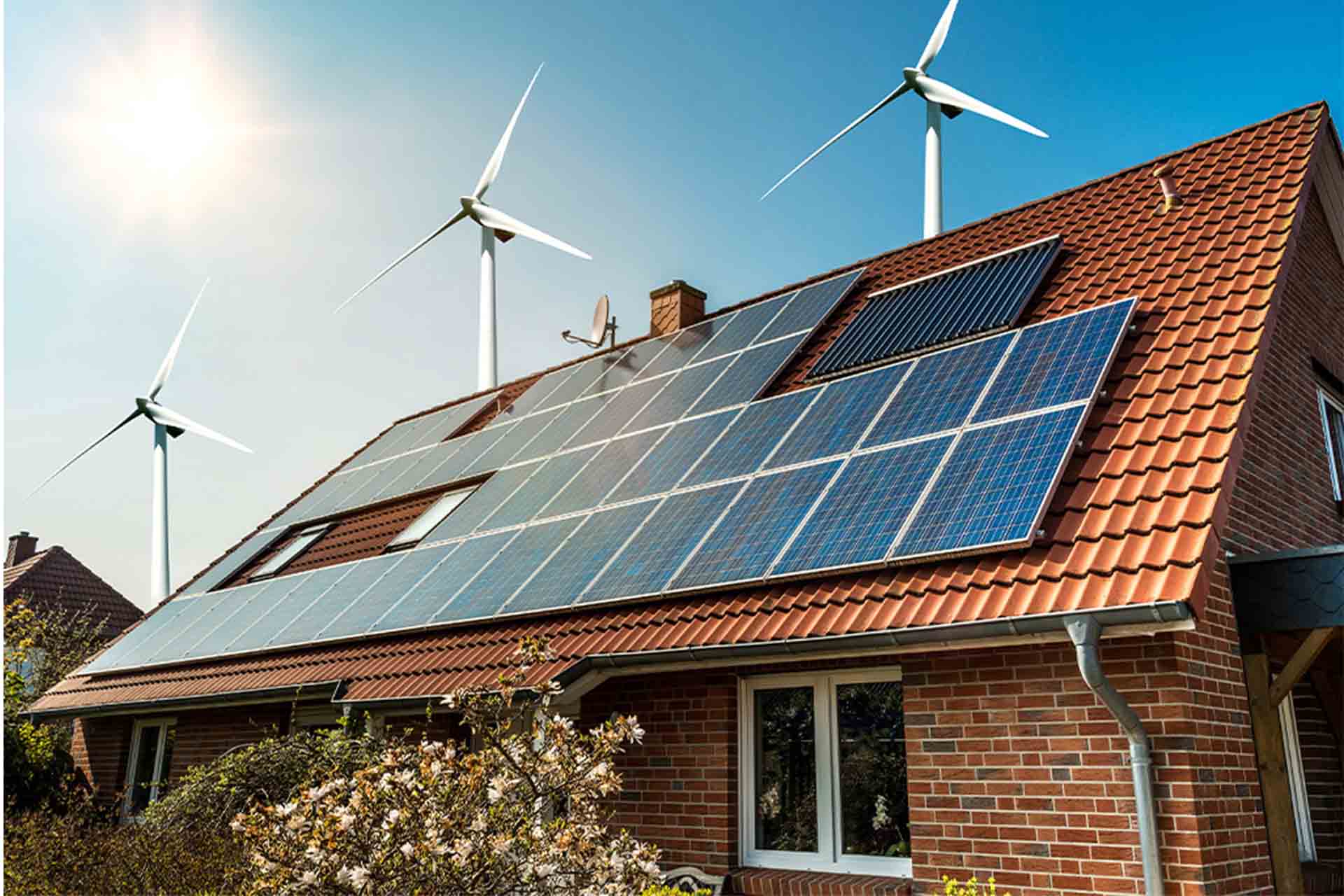Blog>Expert Advice>How to improve your EPC rating and save on energy bills
Last updated: 4 July 2025
How to improve your EPC rating and save on energy bills
Find out all you need to know about Energy Performance Certificates (EPCs) and how one savvy homeowner used their EPC recommendations to save nearly £800 per year on their energy bills!
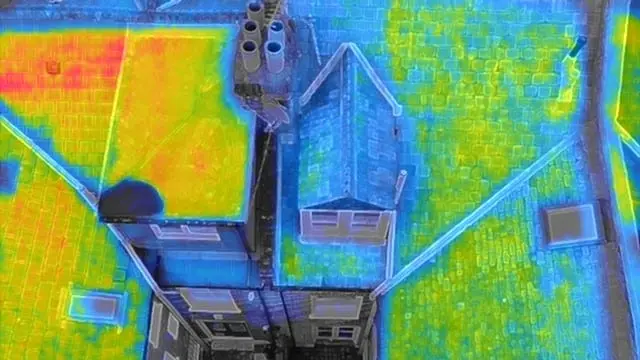
Improving your home's Energy Performance Certificate (EPC) rating can save money on your energy bills, increase your property's attractiveness to buyers or renters, and reduce carbon emissions.
Here, with the help of Chris Grant, of EPC Choice Ltd, we explain what an EPC is, how to interpret your EPC report, and the costs and potential savings of the recommendations it contains.
Chris has over 30 years of property experience and was one of the very first qualified Assessors when EPCs came into play in 2008. Since then, EPC Choice has gone from strength to strength, providing EPCs for clients all over the UK.
See the tradespeople we've checked and recommend for your job
Understanding EPC ratings
An Energy Performance Certificate (EPC) is a legal requirement when selling or renting a property in the UK. But it's also a helpful way for homeowners to identify ways to cut their energy bills and reduce their carbon footprint.
It rates a property's energy efficiency on a scale from A (most efficient) to G (least efficient) and includes recommendations for improvement
It also estimates how much money could be saved on your energy bills by carrying out each recommendation
How is an EPC rating generated?
An EPC Assessor will come to your property to conduct an EPC survey.
They'll measure your property and record information on key areas including the walls, floors, roof, windows, and heating to work out your property's energy efficiency.
Depending on how big your property is, this normally takes between 30 and 60 minutes.

On Checkatrade, you'll only find trades who meet our high standards and pass up to 12 checks.
How to read your EPC certificate
If you're hoping to save money on your energy bills, there's no point getting an EPC for it to sit in your drawer (or inbox) for months to come. Instead, understanding your EPC is key.
Key sections of an EPC report
1. Energy rating
At the top of your EPC, you'll see a letter between A and G. This is your overall energy rating. Remember, A is the best and G is the worst.
To rent your property out, it'll need to be at least a band E
However, some buy-to-let mortgage providers now require landlords to have at least a band C
2. Energy efficiency rating graph
Next, you'll find your energy efficiency rating graph:
Under the 'current' column, you'll see where your property sits on the overall energy efficiency scale
Under the 'potential' column, you'll see where your property could sit with some improvement work
Alongside the rating is a score. This shows you how close you are to being in a higher band
The higher the number, the more energy efficient your property is and the lower your energy bills are likely to be
In England and Wales, the average energy rating is D, and the average energy score is 60
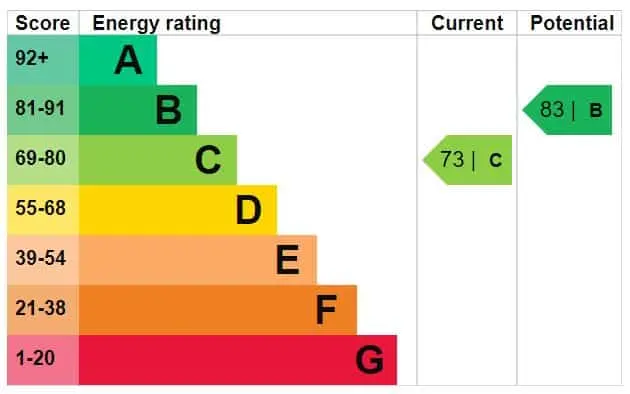
3. Breakdown of key areas
This section provides an evaluation of the energy efficiency of the individual elements of your property, including:
Walls
Floors
Roof
Windows and doors
Heating system
Lighting efficiency
Each feature will have a rating next to it, ranging from 'very good' (most efficient) to 'very poor' (least efficient).
This is a handy way to tell which parts of your home are letting your property's energy performance down. Just be aware that the assessment won't look at the condition of each feature or how well they're working.
Primary energy use
This section will also show you your 'primary energy use':
This is how much energy you're likely to use each year, expressed in kWh per m²
It's an estimate as it makes assumptions about the usage and lifestyle of the people living in the property
4. Environmental impact of the property
If you're environmentally conscious, you'll love this section. It outlines the impact your property is having on the environment based on how much carbon dioxide (CO2) it's thought to produce.
Your property will receive a rating from A to G. Properties that produce the least CO2 will be rated A, and properties that produce the most will be rated G
Your EPC will state how many tonnes of CO2 your property likely produces per year
It will also provide its 'potential production' – that's the amount this figure could be reduced to if you follow the recommended changes that you'll find within your certificate
Did you know, the average household produces 6 tonnes of CO2 each year!
5. Recommended improvements
Next, your EPC will list step-by-step recommendations to improve your property's energy performance based on the details your Assessor has collected during your EPC survey. This will include:
The estimated cost of each home improvement suggested
An estimate of the potential savings (on your energy bills) of implementing each recommendation
Just be aware, that costs don't always reflect current market rates. It's therefore a good idea to get a selection of quotes from tradespeople covering your local area before you get started.
6. Estimated energy usage and potential savings
The final section of your EPC estimates:
How much the average household would spend on your property for heating, lighting, and hot water
The potential savings you could make on your energy bills if the recommendations are implemented
Just remember that it won't consider how many occupants there are, so it's a fairly rough estimate.
Your EPC will then go into more detail to show you the estimated heating demand for the property in kWh per year. You can apply this figure to your energy provider's rate for gas or electricity to get a figure for your annual costs. If insulation is recommended, it will also show the specific savings if it's installed.
See the tradespeople we've checked and recommend for your job
Prioritising EPC improvements
Your EPC lists recommendations in order of the greatest impact, so following them in the order they're listed is often the best approach.
For example, improving your property's insulation is often prioritised over upgrading your boiler because heating efficiency depends on effective insulation.
Should you follow EPC recommendations sequentially?
However, you don't have to follow the list step-by-step. If the first recommendations are too expensive, starting with smaller upgrades will still see improvements to your EPC rating.
Tip: To calculate the impact of one particular recommendation on your EPC rating, subtract the 'before' rating from the 'after.' This will give you a rough idea of the uplift in EPC rating for that improvement.
Just beware, it's not entirely foolproof. Remember, your property won't have benefitted from the previous measure(s), which means it might not provide the uplift you expect on its own.
Recommendation Selector Tool
For an exact figure of how much a standalone recommendation will improve your EPC rating, ask your Assessor to use a Recommendation Selector tool. This will give the precise uplift you can expect, helping you to make informed decisions.
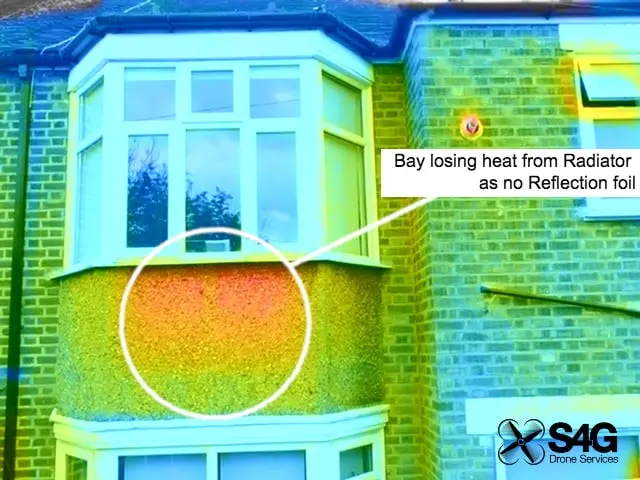
How to improve your EPC rating
Every home is different. The improvements that could make the most difference to your property's energy rating (and energy bills!) won't necessarily be the same as for someone else.
We asked Chris from EPC Choice Ltd to give us some common measures that often crop up on EPCs alongside their typical costs and potential savings.
We start with low-to-medium cost improvements, before outlining some of the more expensive upgrades.
1. Upgrade to LED bulbs
One thing that Chris sees repeatedly crop up on EPCs is old, incandescent bulbs that are no longer available for replacement.
If you have old, inefficient bulbs in your home, you should consider replacing them before they stop working. An EPC will recommend this for any household with less than 60% low-energy light bulbs.
Replacing your lightbulbs with LEDs is an underrated home hack to cut bills. They use 90% less energy than traditional bulbs and last much longer.
Cost: LED bulbs cost less than £5 each
Annual savings: Switching a 100w incandescent bulb to an LED equivalent could save you around £15 per bulb per year (based on a 1,100-lumen bulb running for 562 hours per year)
Impact: Replacing all the bulbs in your home with LEDs could save more than 60kg of carbon
2. Improve your loft insulation
Another point that regularly comes up in EPCs is loft insulation.
The recommendation to install new loft insulation or to add to what's there will usually crop up for any home where there's less than 100 mm of loft insulation in place.
However, it can also be triggered if a homeowner has squashed the insulation they've installed by boarding the loft. In fact, squashing your loft insulation by boarding over it can reduce its efficiency by 50%!
Cost: Quilt loft insulation costs in the region £654 - £1,206 to top up from 120mm to 270mm (depending on the size of your property)
Annual savings: According to the Energy Saving Trust, by topping up your loft insulation, you could save between £19 and £35 per year on your energy bills (depending on the size of your home)
3. Install cavity wall insulation
Cavity wall insulation is another measure that's commonly suggested on EPCs.
Before the 1980s, cavity walls often weren't insulated. However, by adding cavity wall insulation to uninsulated walls, you could majorly improve your EPC rating.
Cost: The average cavity wall insulation cost is between £950- £4,600 (depending on the size of your property)
Annual saving: Cavity wall insulation could save you between £160- £470 (depending on the size of your property)
You can often get help with the cost of cavity wall insulation from government schemes, which can make it even more attractive.
Is cavity wall insulation right for my home?
Cavity wall insulation can be a bit of a contentious issue.
If it's not carried out right or done in the wrong kind of home, it can lead to mould and dampness, which could lead to structural issues.
Any structural recommendations are out of your EPC Assessor's remit, so you'll need to ensure your home is suitable for cavity wall insulation before ploughing ahead with it.
Having said that, when it's done well and on the right property, it can have an excellent impact on your home's energy performance and can result in a relatively high return on investment.
Contact or pay a trade through Checkatrade and you’re covered by our 12-month guarantee of up to £1,000*

4. Install solar panels
According to Chris from EPC Choice Ltd, installing Solar Photovoltaics (PV) panels can improve your EPC rating by anything between eight and 15 points — a huge uptick!
This is, however, the first of the more costly home upgrades we'll outline in this guide.
Cost: Solar panel installation cost is typically around £8,000 for a 4kW PV system (suitable for a 2-3 bed home)
Annual savings: You could save around £735 per year on your energy bills (based on a 4kW system)
5. Solid wall insulation
Homes with solid walls are not uncommon in the UK and are therefore not unusual to see on an EPC report.
Solid walls let twice as much heat escape as cavity walls. A useful way to make an old home energy efficient is to add solid wall insulation, either internally (attaching insulation to the inside walls) or externally (attaching insulation to the outside of your house).
It is, however, another costly home improvement compared with some of the other recommendations we've covered so far. But arguably, it's the one that could give you the most benefit.
Cost: On average, external wall insulation costs between £8,000 - £25,000 (depending on the size of the property)
Saving: According to the Energy Saving Trust, you could save between £150 and £550 per year on your energy bills (depending on the size of your home)
NB. Adding solid wall insulation can affect the appearance of your property, and RdSAP (the software used by EPC Assessors) won't consider whether your property is listed or in a conservation area. You'll therefore need to check whether solid wall insulation is suitable and permitted (by your local authority) before proceeding.
See the tradespeople we've checked and recommend for your job
6. Other high-impact measures
Checkatrade member, Mark, from S4G Drone Services also shared some other high-impact measures that can improve EPC rating:
Double glazing - To enhance insulation
New doors - To help retain heat
Air source heat pumps - For increased heating efficiency
Wind turbines - To utilise renewables
Find out about the financial help available for green home upgrades in 2025 in our comprehensive guide:
Green home grants available in [year]
Looking to make your home more eco-friendly and energy-efficient? Discover the latest green home grants that could help you save money while reducing your carbon footprint.
Case study: This homeowner reduced their energy bills by 60%
Chris from EPC Choice Ltd shared a fantastic example of a homeowner who has made big savings after implementing the recommendations in their EPC report.
The property: A three-bed terraced house with solid walls and no double glazing or loft insulation
Old EPC rating: Following the initial EPC survey, the property had an energy rating of D with a score of 61
Recommendations implemented: Added loft insulation, double glazing, LED bulbs, solid wall insulation, and solar panels
New EPC rating: After carrying out all these works, the homeowner undertook another EPC survey and was delighted to find that the property was now rated a B, with a score of 81
Energy savings: The homeowner reduced their annual energy costs from around £1,256 to £469 per year after making these green home improvements – a massive £787 saving!
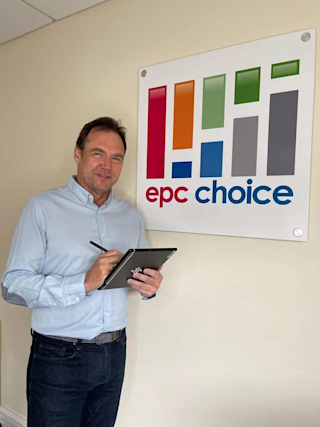
Chris Grant EPC Choice
Chris Grant is the Founder and Operations Director at EPC Choice. As one of the first qualified Energy Assessors in the UK he has built EPC Choice into a leading provider of both domestic and commercial Energy Performance Certificates.
Chris Grant Founder
Quick summary for improving your EPC
Book an EPC survey: To find out your current rating and identify areas for improvement
Tackle low-cost upgrades first: LEDs, loft insulation, and draught-proofing are quicker wins
Prioritise insulation: Loft, wall, and window insulation can boost EPC ratings significantly
Explore grants and funding: Government schemes can help to reduce upfront costs
Consider renewable energy: Solar panels and heat pumps provide long-term savings
Reassess after improvements: To discover your new EPC rating and energy savings
Find an accredited EPC Assessor near you
Ready to improve your home's energy efficiency and reduce your energy bills? Search your postcode to find EPC Assessors we've checked and reviewed in your area.
See the tradespeople we've checked and recommend for your job
FAQs
How to get an EPC certificate?
To get an EPC, you'll need to find an accredited assessor to undertake a survey of your property and issue your certificate. EPC costs range from £65 - 120 depending on the size of the property. Advice on a full package of improvement measures may cost more.
How to get a copy of my EPC certificate?
You can find an existing energy performance certificate through the Gov.uk website.
See the tradespeople we've checked and recommend for your job
